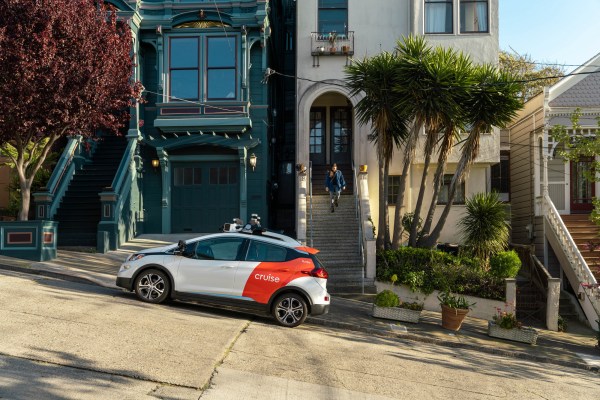[ad_1]
Cruise requested to chop robotaxi fleet after crash

GM’s self-driving car subsidiary, Cruise, has been ordered by the California Division of Motor Autos (DMV) to cut back its robotaxi fleet in San Francisco by 50%. The request comes after a latest accident involving a cruise automotive and a fire truck. The DMV, accountable for regulating autonomous automotive testing and deployment within the state, mentioned it’s investigating a number of incidents involving cruise automobiles in San Francisco. Due to this, it has referred to as for the cruise to function with as much as 50 driverless autos through the day and as much as 150 driverless autos at night time till the investigation is full. The DMV emphasizes that public security is its prime precedence and reserves the appropriate to withhold or revoke testing and deployment permits if deemed an unreasonable menace to public security. The aim of the DMV’s legal guidelines is to make sure the protected operation of autonomous autos and to guard most of the people on the roads.
Cruise complies with the request
Cruise has confirmed compliance with the DMV’s request to chop its fleet. The corporate additionally printed a weblog put up giving its perspective on the circumstances that led to the accident. In a press release, Cruz highlighted the day by day lack of lives and the massive variety of accidents on American roads. The corporate believes that its operations have a optimistic influence on total street security and expressed a dedication to collaborating with the DMV to extend security and effectivity.
Newest Snafus and Industrial Schemes
Cruise has suffered various glitches, together with stories of at the least 10 driverless automobiles stalling and inflicting site visitors disruptions. These occasions pose a menace to its industrial plans. The disturbances occurred shortly after Cruise acquired approval from the California Public Utilities Payment (CPUC) to increase its operations in San Francisco. The CPUC, the regulatory physique for ride-hailing firms, granted Cruise and Waymo the remaining permits that allow them to function 24/7, develop their fleets and improve the price of rides all through the town.
accident and injury particulars
The newest incident involving a cruise automotive occurred when a robotaxi collided with an emergency automotive, injuring one passenger. In accordance with Cruz, considered one of his self-driving Chevy Bolt EVs entered an intersection with a inexperienced site visitors mild at Polk and Turk Streets. On the identical second, it collided with an emergency automotive that was on its strategy to an emergency web site.
Maintain off on Robotaxis Charging Schemes
Earlier within the week, David Chiu, the San Francisco Metropolis Legal professional, filed a petition with the CPUC to cease Cruise and Waymo’s plan to cost for robotaxi rides in any respect hours within the metropolis. Chiu’s arguments match issues raised by residents and different metropolis officers throughout a public listening to previous to the CPUC’s approval.
conclusion
The California DMV has requested Cruise to cut back its robotaxi fleet by 50% following a crash involving considered one of its autos and a fireplace truck. Because the investigation into the incident continues, the DMV is prioritizing the security of most of the people and reserves the appropriate to withhold or revoke testing and deployment permits if public security is deemed a menace. Cruz has pledged his cooperation and perception into the optimistic influence of his actions on street security. Nevertheless, the corporate has confronted numerous challenges just lately, together with car stalls and site visitors disruptions. Regardless of these setbacks, Cruise stays dedicated to its industrial plans and has obtained the remaining permits from the CPUC to increase its operations in San Francisco. The incident involving a collision with an emergency car has raised issues, leading to a petition for the town to cease charging for robotaxi rides. The outcomes of the investigation and subsequent actions by Cruise and regulatory our bodies will pave the way in which ahead for autonomous automotive deployment in San Francisco.
basic query
1. Why was Cruise requested to cut back its robotaxis fleet?
The California DMV requested Cruise to cut back its robotaxi fleet by 50% after an accident involving considered one of its autos and a fireplace truck in San Francisco. The DMV is at present investigating incidents involving cruise automobiles and different incidents within the metropolis.
2. What are the implications if Cruise doesn’t make the requested changes?
If Cruz fails to accommodate the DMV’s request, the DMV has the authority to droop or revoke their testing and deployment permits if it determines there may be an unreasonable menace to public security.
3. How does Cruz see its influence on street security?
Cruz believes this has a optimistic influence on total street security. The corporate is dedicated to working with the DMV to supply the info it wants to enhance its operations and improve the security and effectivity of its fleet.
4. What challenges has Cruise confronted just lately?
Cruise has been affected by glitches, together with at the least 10 incidents of its driverless autos stopping and blocking site visitors. These points might have an effect on the economic plans of the corporate.
5. Has Cruise been authorised to increase to San Francisco?
Sure, Cruise has acquired the remaining permits from the California Public Utilities Fee, permitting it to increase its operations in San Francisco. The allow permits Cruise to function 24 hours per day, seven days per week, increase its fleet, and pay for rides all through the town.
[ad_2]
To entry extra info, kindly seek advice from the next link
